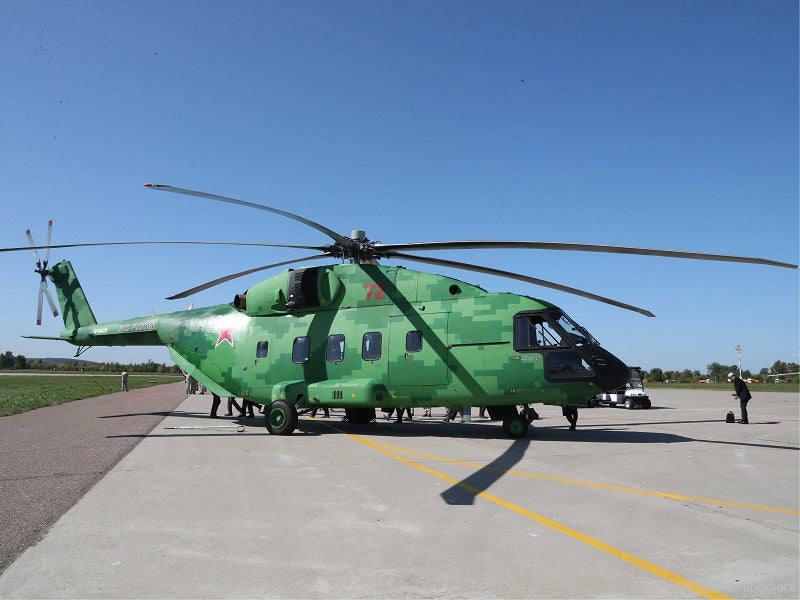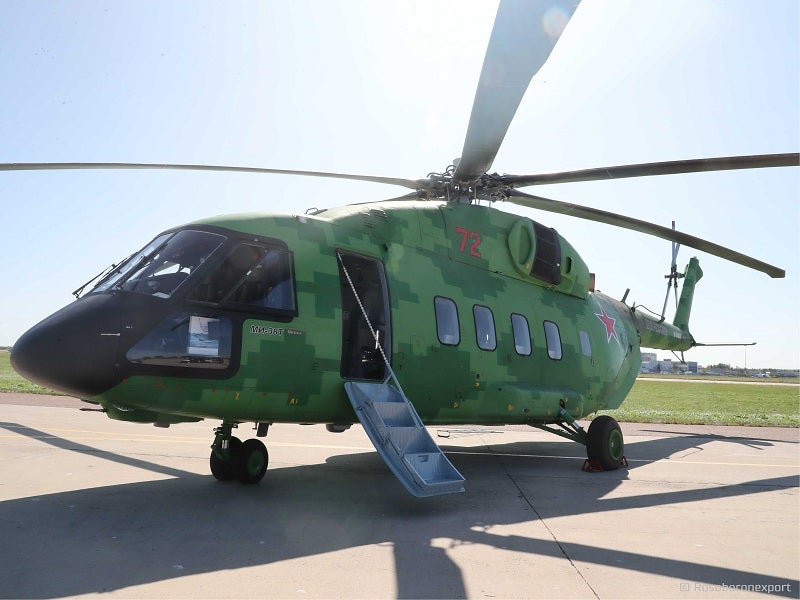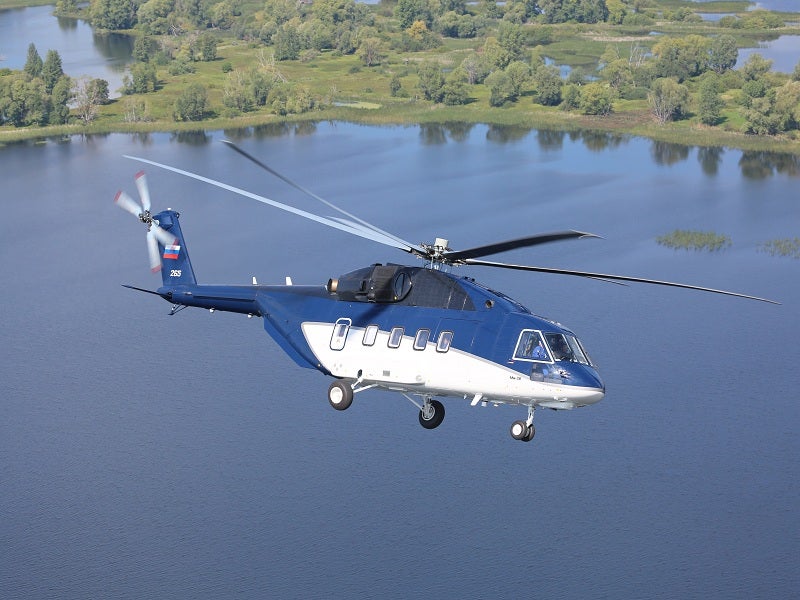Mi-38T is a new multi-mission military helicopter manufactured by Kazan Helicopter Plant, a subsidiary of Russian Helicopters. It is a military variant of the certified Mi-38 multi-role civilian helicopter.
The medium-range helicopter made its first flight in November 2018. The Russian Ministry of Defence (MoD) took delivery of the first serial Mi-38T helicopter in December 2019. Russian Helicopters delivered the second helicopter to the Russian MoD in January 2020.
Russian state-owned arms exporter Rosoboronexport JSC, a part of the Rostec State Corporation, received the first export contract from a foreign customer to deliver the Mi-38T multi-purpose helicopters, in January 2020.
The Mi-38T multi-role helicopter can be deployed in passenger/cargo transport, medical evacuation, search and rescue (SAR) and utility missions.
Mi-38T design and features
The rotorcraft integrates a semi-monocoque fuselage including nose and central sections, tail boom, tail boom pylon, stabilizer, and power plant cowlings. It was constructed using Russian-made high-tech components.
The multi-role military helicopter features a conventional single-rotor design and incorporates Russian Helicopters’ advanced technologies. The under-fuselage is fitted with a non-retractable landing gear including a nose gear unit, two main gears and a tail unit. The main landing gear units are positioned on either side of the fuselage. The wheel units are installed with hydro-pneumatic shock absorbers.
Mi-38T is also installed with a fuel delivery system integrating explosion protection. It carries additional fuel tanks to increase the flight range.
Cockpit and avionics of Mi-38T helicopter
The all-glass cockpit of the Mi-38T is installed with an IBKO-38 integrated avionics system. It features five multifunctional displays (TDS-12), two multi-purpose control and display units, flight-navigation and radio communication equipment control panels and units.
The IBKO-38 avionics system also integrates a radio altimeter, weather navigation radar, distance measuring equipment, ground proximity and air collision warning systems. Special means of protection and secure communication are installed upon the customer’s request.
Mi-38T cabin and cargo capacities
The spacious cabin of Mi-38T can accommodate up to 40 people or up to 12 wounded personnel on stretchers or up to 30 sitting cases, accompanied by 2 medical attendants. It can transport a maximum cargo payload up to 5,000kg in cargo compartment or up to 5,000kg on an external sling.
The Mi-38T helicopters can be configured with a VIP interior layout for accommodating passengers in high comfort conditions. The VIP configuration offers comfortable armchairs, sofas, a wardrobe, a kitchen and a bar. The cabin is provided with increased sound insulation.
The helicopter can deliver superior performance than other counterparts in its class in terms of cargo load and seating capacities as well as operational range with maximum payload. It is capable of transporting up to a platoon of infantry to a range of up to 800km, when compared to its competitors with the limited carrying capacity of one or two squads.
The helicopter can also be configured for SAR missions. It can hoist personnel and cargo weighing up to 300kg from the land or water in hover mode. The rotorcraft features a rear cargo hatch fitted with a hydraulically-operated loading ramp, and a starboard hatch with a wide sliding door. The ramp supports rapid loading and unloading of cargo and equipment, including the roll-out of wheeled and tracked vehicles.
Engines and performance of Mi-38T multi-purpose helicopter
The Mi-38T helicopter is powered by two Limo TV7-117V engines with each developing a maximum continuous power of 1,545kW. The power-plant is equipped with a new full authority digital engine control (FADEC) system.
The rotorcraft has a maximum speed of 300km/h, which reduces the reaction time during medical evacuation and cargo transport missions. The Mi-38T helicopter can operate during day or night in all weather conditions and temperatures ranging between -45°C and 50°C. It can perform missions under icing conditions, while flying at altitudes up to 6,300m. The helicopter has the capability to land on unprepared sites.






